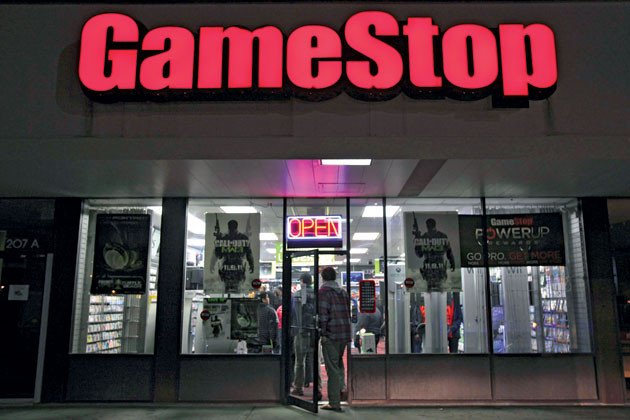 Throughout the late 80s and early 90s, brick and mortar video game stores thrived. It was a niche market with dedicated fans who loved being able to connect locally with others who had similar interests. You could shop, learn about new games, perhaps play an arcade game or two, and generally immerse yourself in the culture. As gaming became mainstream, mass retailers began offering video game products too.
Throughout the late 80s and early 90s, brick and mortar video game stores thrived. It was a niche market with dedicated fans who loved being able to connect locally with others who had similar interests. You could shop, learn about new games, perhaps play an arcade game or two, and generally immerse yourself in the culture. As gaming became mainstream, mass retailers began offering video game products too.
Eventually, with the advent of the internet, this shopping experience gradually shifted online. The popularity of online video game shopping has directly impacted the long-term viability of brick and mortar retailers. Combined with the shift toward digital downloads, many friendly local game stores find themselves struggling to compete. Can physical retailers keep up, or will they go the way of the dodo and become extinct?
Perks of Online Shopping
Digital retailers can often offer products cheaper, sometimes even with the perk of free shipping. Amazon in particular has this free shipping element built into its membership model. Prime service members receive free two-day shipping on all qualifying products. It’s all part of a distinct shift in consumer spending habits. In addition to this, Amazon also has a marketplace where small businesses and individuals can offer products at reduced prices.
Amazon is not alone in offering great deals. Gamefly has aggressive pricing on its pre-owned games. For example: when I purchased DOOM for the Xbox One, it was $19.99 pre-owned, and I had an additional $5 off coupon because of my membership. The game title shipped to me for free.
At that very same time, the GameStop down the street was selling used copies for $54.99. You tell me which purchasing option is more attractive. It’s hard to justify spending so much more at my local GameStop when I can get the same game elsewhere for cheaper. This is doubly true for retailers with inconvenient store locations. As with any business, nabbing a highly visible location is vital to brick and mortar success. Otherwise, it’s easier to order online and wait a few extra days for the shipment to arrive.
This problem can be compounded for small local game stores that survive on narrow margins. Many simply cannot afford to sell their stock for so much less than they purchased it. Undercutting their own prices to match other retailers is dangerous considering how volatile the value of newer games can be. Some are always fluctuating, while others (like Mario or Pokemon titles) stay consistent for years.
Retailers Have Advantages Too
It’s not all doom and gloom for brick and mortar retailers, however. One major advantage of physical game retail locations is that they provide immediacy combined with a sense of ownership. Digital downloads on Amazon provide instant gratification, but don’t provide any sense of ownership since all you’ve purchased is a code key. There’s no disc, no case, and no physical manual. Collectors who have a penchant for amassing physical collections will avoid digital downloads as often as possible.
Where small stores fare best is in the realm of classic video games. It’s completely possible to stock a vintage game store with thousands of titles released across the past 30-plus years, and this provides a wealth of variety and price points. The downside is that if you don’t have what your customers want, they can go online instead and potentially score the game for cheaper.
The best way to offset the pricing disadvantage is by offering a unique experience. By offering something your competitors don’t, then there’s more room for flexibility. You can build rapport and relationships at physical locations, and this human factor can offset financial disadvantages.
If you treat your customers right, they’re much more likely to treat you right in return. This can be an in-store experience, your wealth of knowledge, social skills or gimmicks like local clubs, game nights, etc. Friendly local game stores often function as a social hub in their respective communities. There’s rarely a community component in large online retailers like there often is for small local retailers.
I have seen loyal customers choose higher priced local stores or demonstrate a willingness to wait for stock to arrive, all just to make sure their favorite local store benefits. Would anyone be willing to do this for a mass-market retailer like GameStop? Highly unlikely.
It is exceedingly difficult for small retailers to beat large online retailers at their own discount game. In order to succeed, small brick and mortar locations must offer other components that can’t be found anywhere else: human connection, physical copies and collectibles, and a unique cultural experience.

